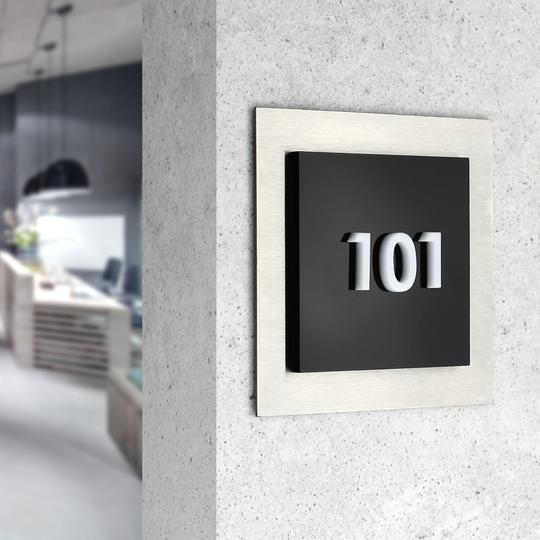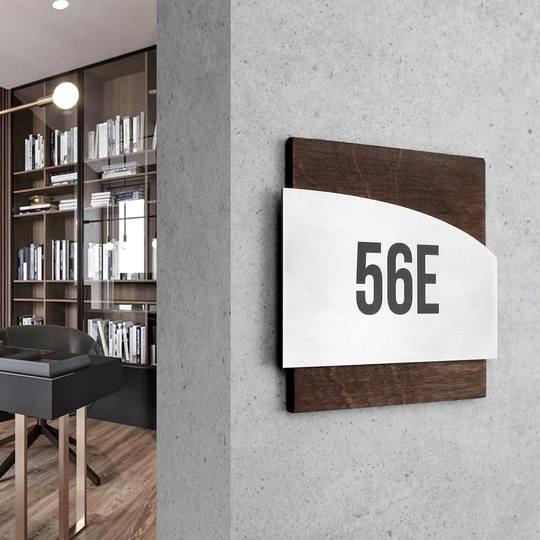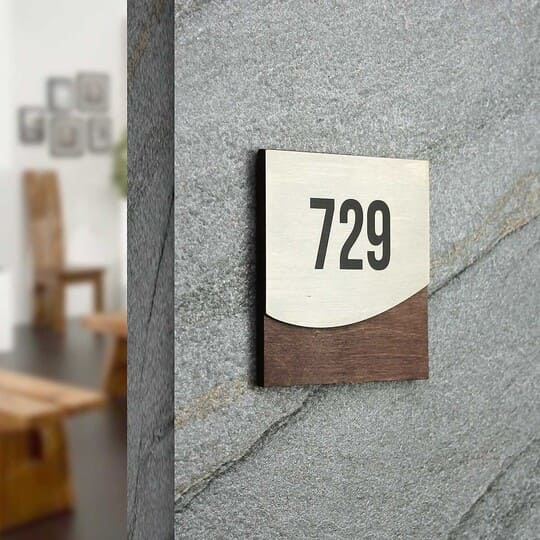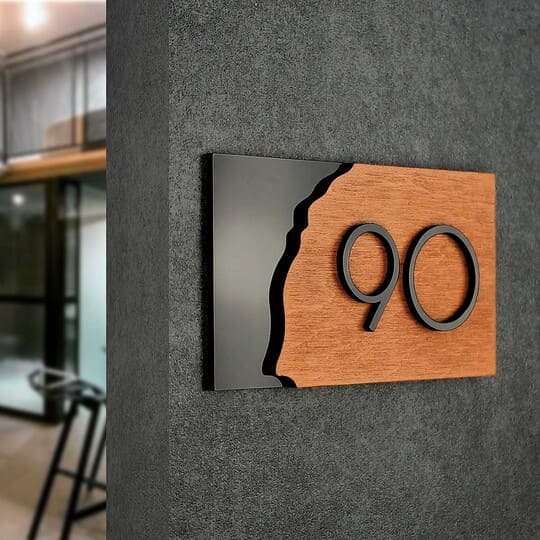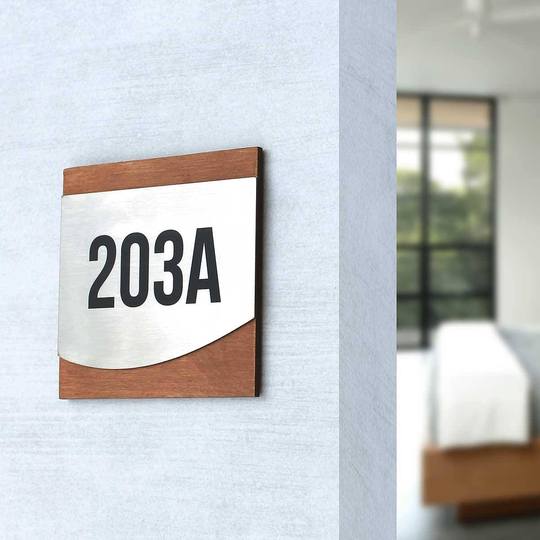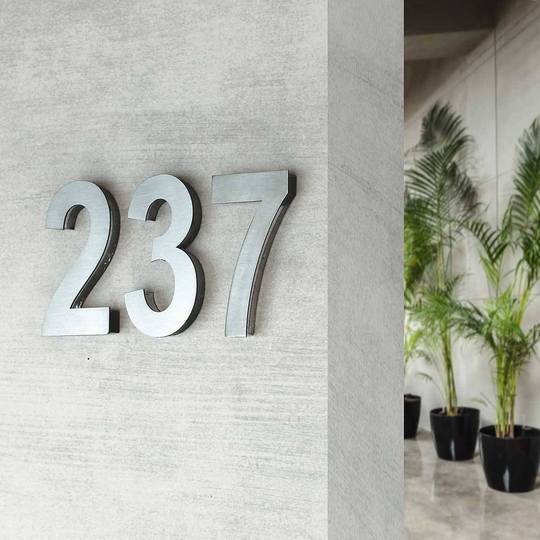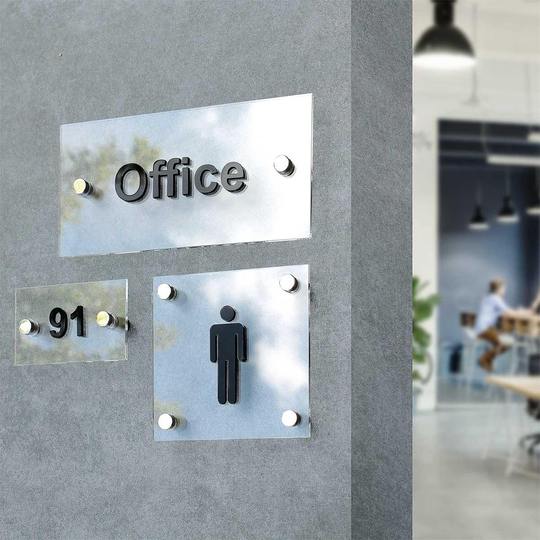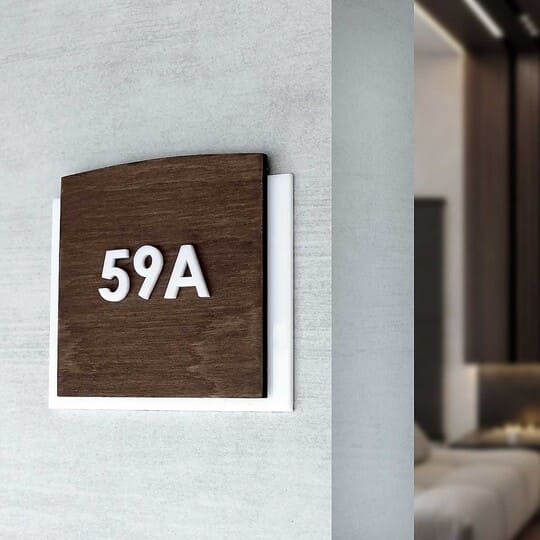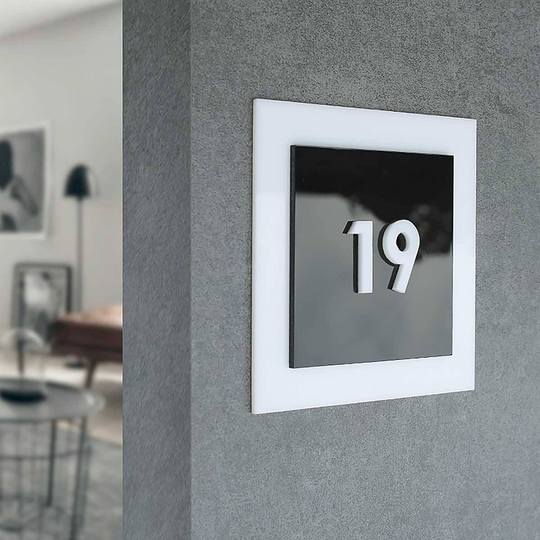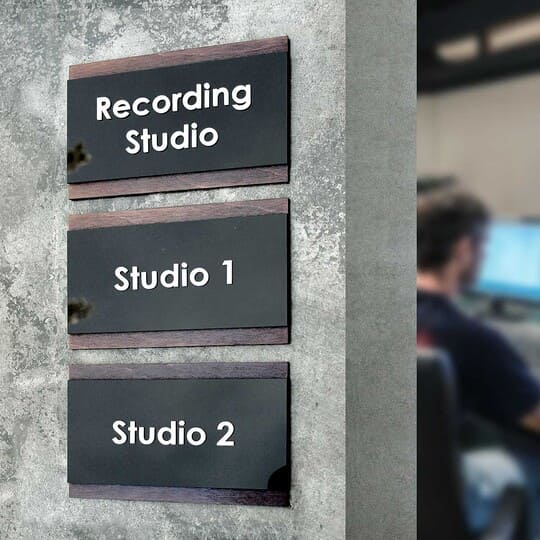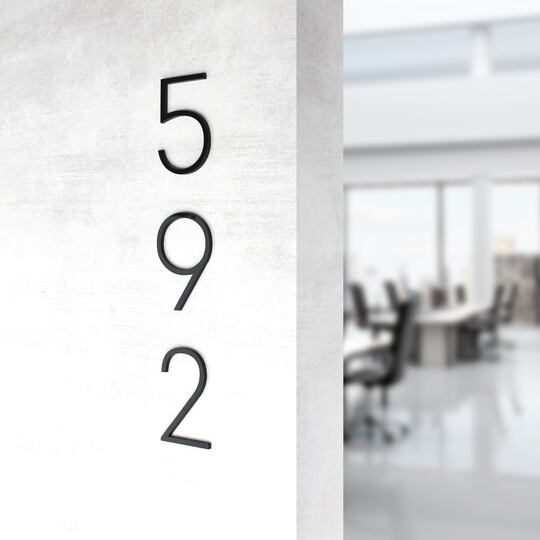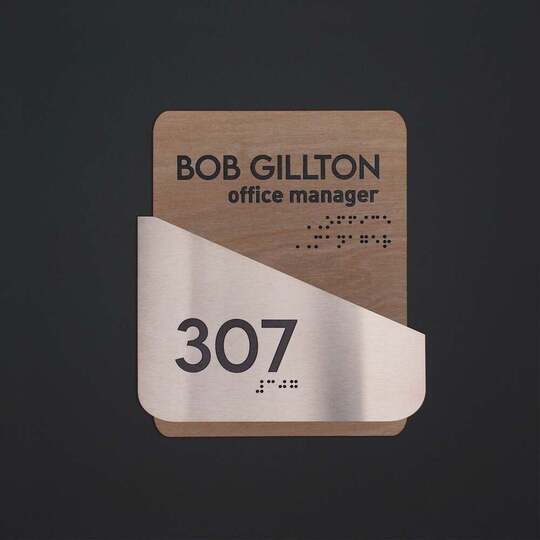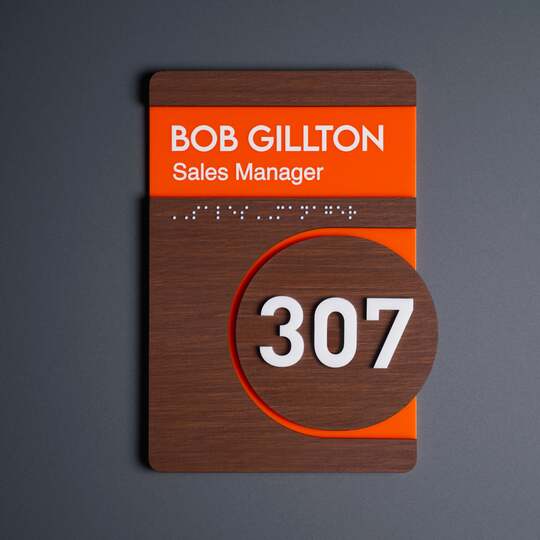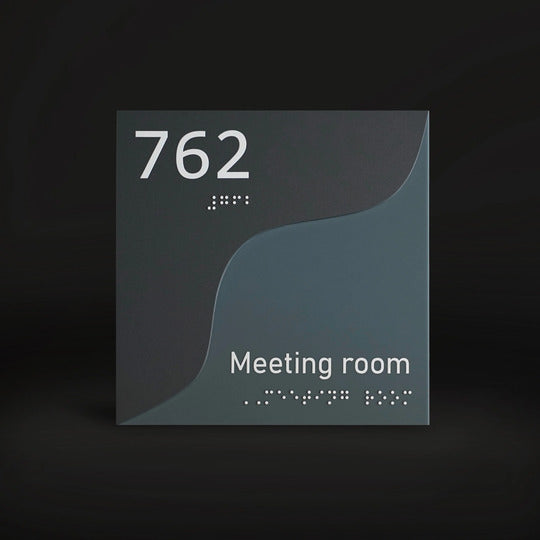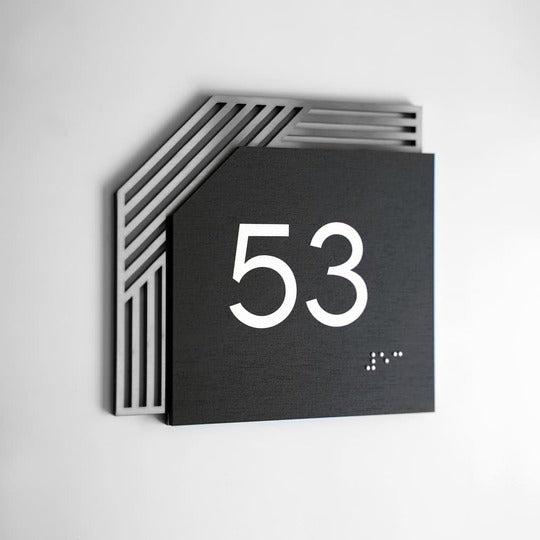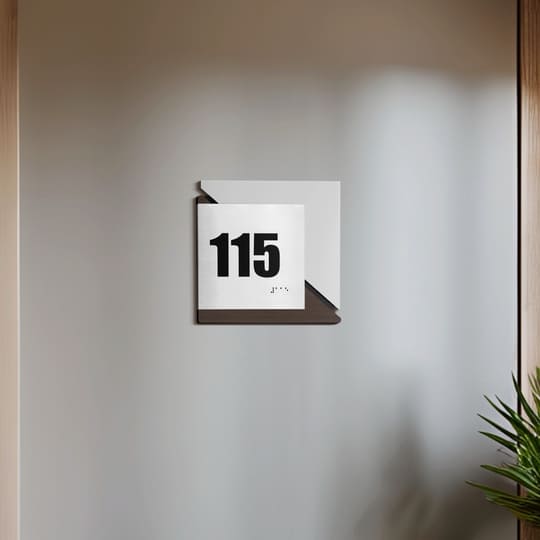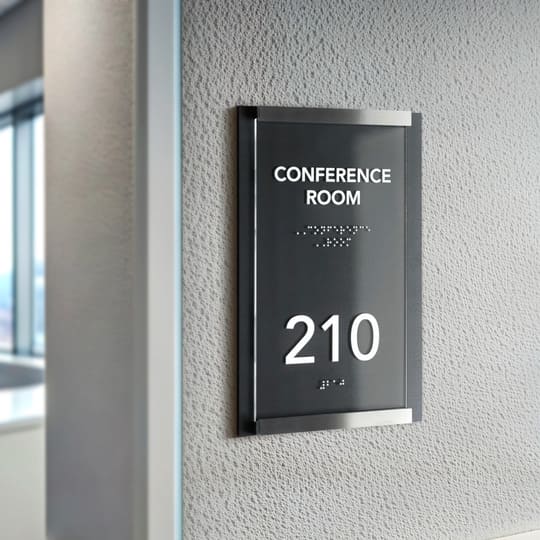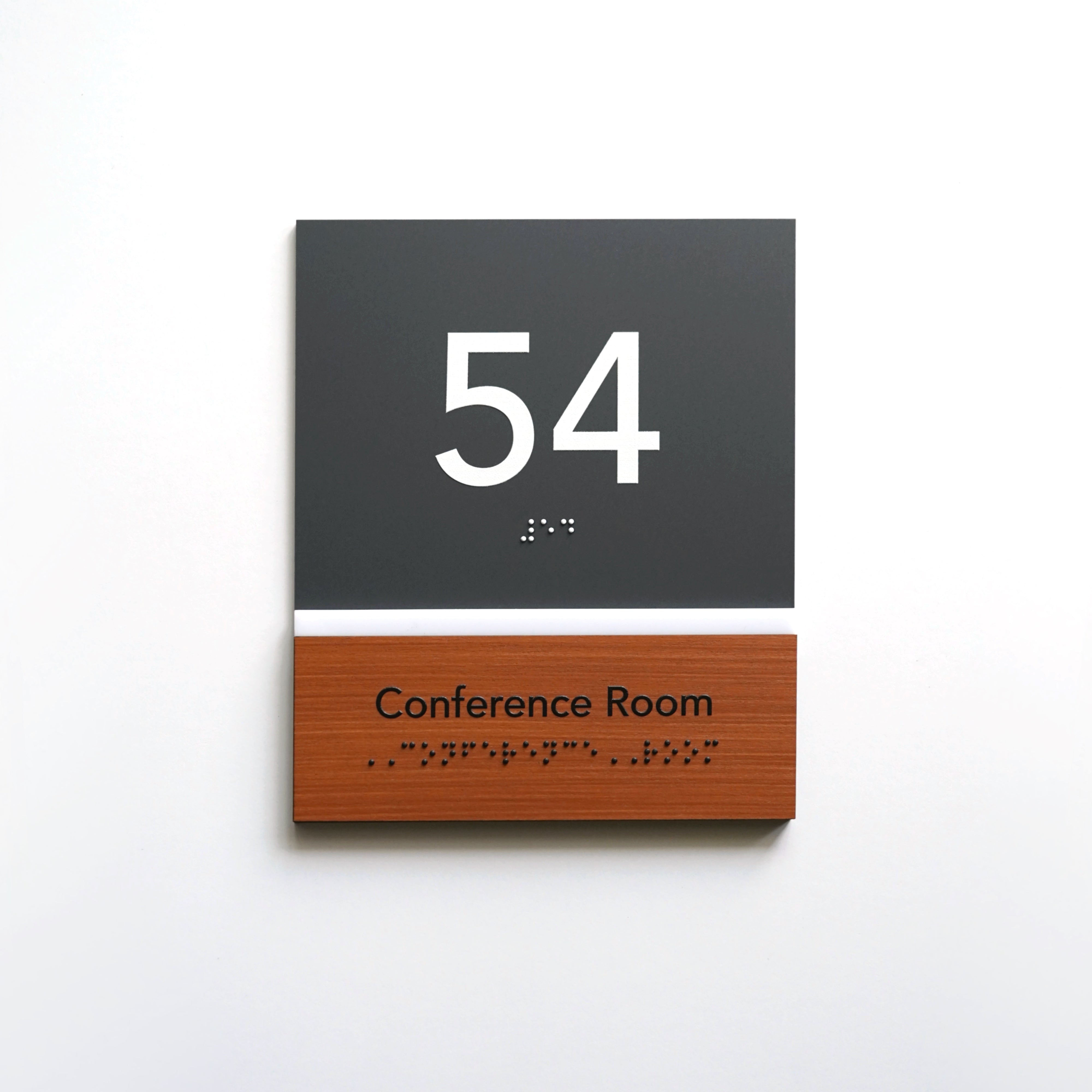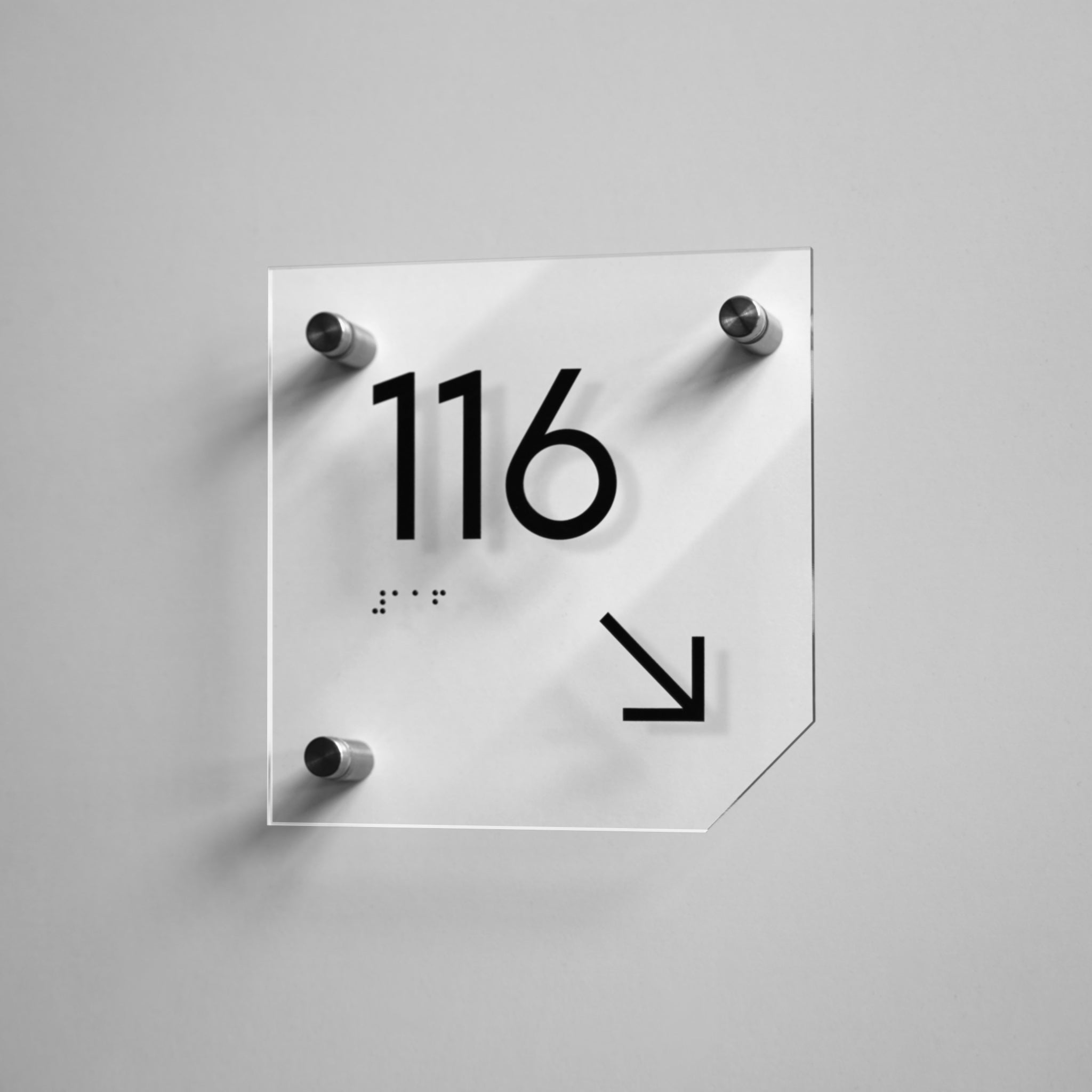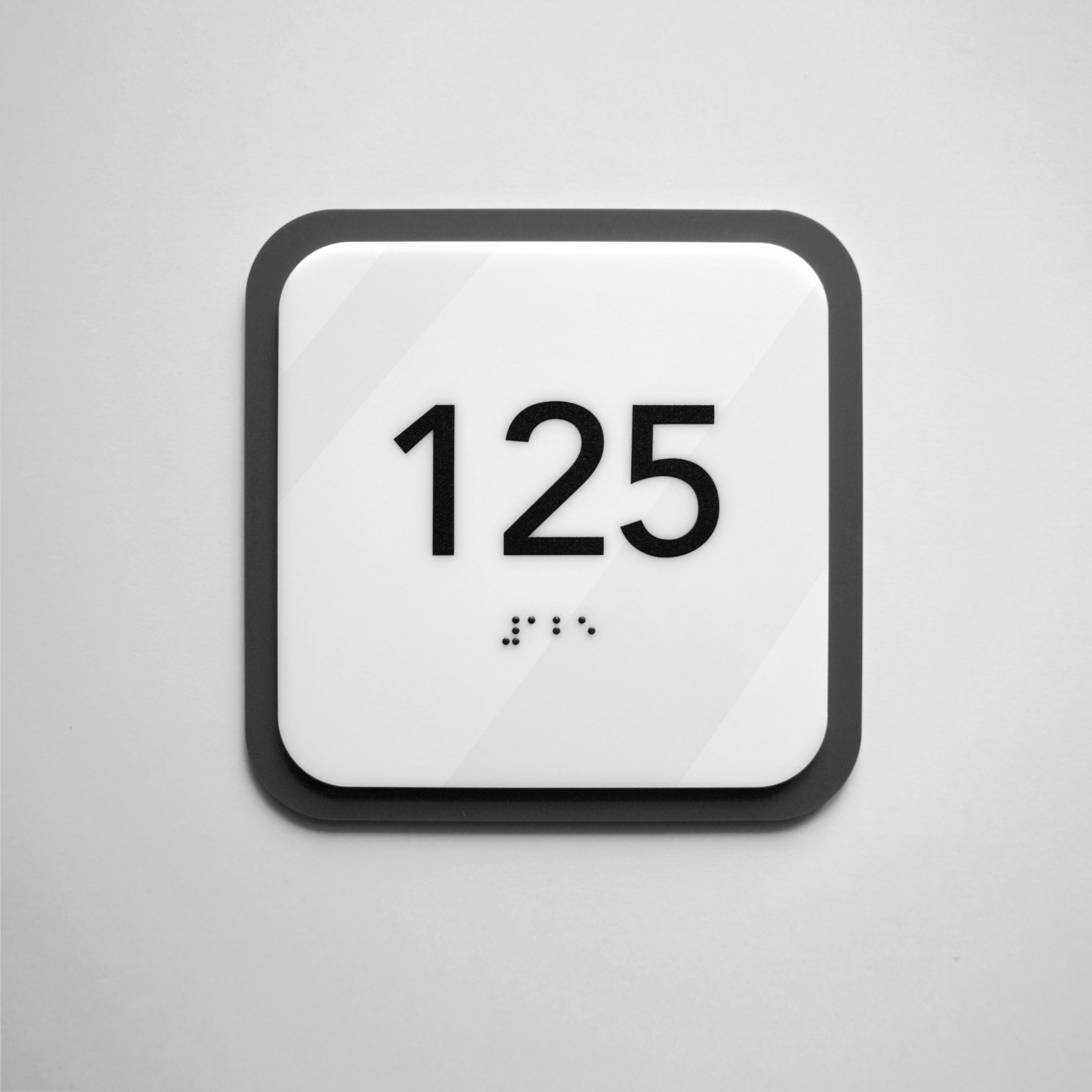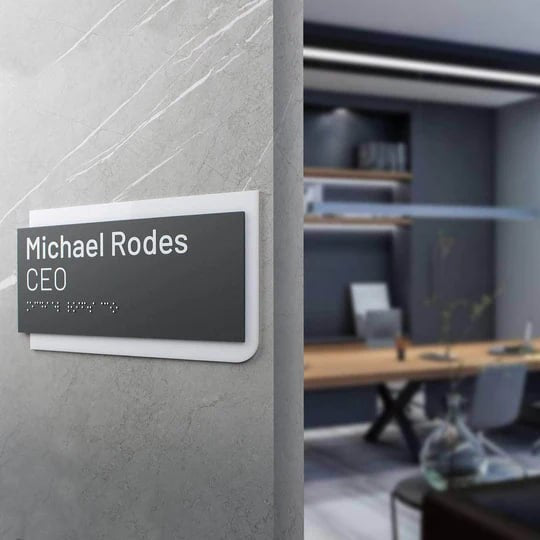
Top 5 hotel door signs: how to create stylish and convenient navigation for guests
Every detail in a space — from the scent in the lobby to the texture of a doorknob — shapes a guest's impression. But there’s one element guests notice before they even interact with staff: hotel door signs. Room numbers, directional cues, zone markings — they are the visual handshake of your brand. These signs are more than just information. They’re part of your identity, your design language, your respect for the guest. When done right, interior signs make the space more memorable, navigation more natural, and every visit feel smoother, more thoughtful.
In today’s hospitality world — where competition is about emotional connection, not just bookings — signs become a strategic design tool. For businesses in the hotel industry, seamlessly integrating elegant signage into the spatial concept isn’t just decor — it’s smart marketing. And it’s where true guest care begins. To create truly effective wayfinding, you need to study guest behavior, understand spatial layouts, and follow their natural paths. Only then will signs become genuinely useful.
This is especially true for luxury hotel signage, where every element contributes to the emotional narrative. In these spaces, details work toward a premium guest experience — signaling care, refinement, and attention. High-end signs send a clear message: this company doesn’t cut corners; it invests in perception and prestige.
In this article, we explore the top 5 most essential types of signs every hotel should have — regardless of size — to strengthen the brand, delight guests, and drive meaningful results for your business.

Hotel room numbers: more than just digits
Room numbers are the foundation of hotel navigation, but they also send a message: this is a space where every detail matters. Well-designed room number builds trust and creates a sense of status. It’s the guest’s first physical interaction with your space — either reinforcing a positive first impression or quietly unraveling it.
In luxury hospitality, that impression carries even more weight. A room doesn’t just have a number — it has a face. And that face should be elegant, intentional, and in harmony with the overall interior design concept.
Recommended materials include wood, stainless steel, and acrylic. These materials allow for crafting durable signs that withstand heavy use without losing their visual appeal — even with daily wear. This approach goes beyond function — it enhances the aesthetic quality of the space and, in turn, boosts guest satisfaction.
In a world where guests are increasingly detail-aware, something as small as a door number can influence whether they leave a glowing review — or return at all. And if your company wants to build an experience-oriented business, these navigation elements should work flawlessly.

Hotel room door signs: personalization that signals quality
In boutique hotels or apartment-style accommodations, individuality matters. That’s why a room door sign can go beyond numbers — it might feature a name, a theme, or a room category. It’s more than decoration; it’s a part of the brand’s identity that boosts recognition and creates an emotional connection before the guest even steps inside.
Custom hotel signs give you the freedom to align the space with your hotel’s concept, values, and message. Elegant signs reinforce a sense of status, refinement, and care. This approach enhances the emotional dimension of the guest experience, turning the hotel room into a signature part of the brand journey.
These solutions forge an emotional bond with guests and become a tool through which the company communicates with its customers. In a highly competitive hospitality market, it’s this kind of attention to detail that earns loyalty and turns first-time visitors into returning guests. A great example? Think of boutique hotels with themed rooms — where the sign on the door isn’t just functional but helps convey the atmosphere and concept of the space.

Interior wayfinding signs: stress-free navigation
If guests can easily find the elevator, spa, or restaurant, their satisfaction begins before the service does. Hotel directional signs should feel intuitive. Their job is to help guests move around the hotel with ease and confidence — without second-guessing or relying on staff. This holds true for both compact boutique hotels and large resorts, where signs support orientation at any hour of the day or night.
For maximum impact, signs should be designed in a consistent style — in harmony with the hotel’s interior style, fonts, colors, and architectural lines. The modern signage design, created with the overall style of the space in mind, preserves both logic and aesthetics while ensuring convenience and quick perception of information.
For instance:
- • Conference room signs — professional and refined, ideal for hotels with business centers, reinforcing a corporate-friendly atmosphere and high level of service.
- • Floor number signs — minimalist but visible, they ease orientation on each level and work seamlessly alongside elevators and stairs.
- • Spa door signs — designed to evoke calm and quiet, setting the mood before the guest even enters.
- • Directional signs to rooms — support wayfinding throughout hallways and lobbies, especially when stylistically in sync with room numbers.
- • Emergency exit signs — not only a mandatory part of safety signs, but also an opportunity to show care for guest life and health. These should be both easy to spot and aesthetically integrated.
These effective signage does more than direct — it shapes how guests perceive the building itself. They contribute to a feeling of order, comfort, and professionalism. And when made from high-quality materials, they naturally elevate the space. These signs aren’t just functional elements — they’re daily ambassadors of your brand identity, reinforcing recognition, trust, and return visits.
Proper positioning, viewing angles, height, and lighting all demand a thoughtful installation strategy to get it right.
Restrooms signs: small format, big significance
Restroom signage is a subtle test of attention to detail. In luxury hotels, even this seemingly minor element should be elegant, aesthetically pleasing, and aligned with the overall concept.
Though small in size, it’s where mistakes are most visible. The key lies in modern design, typographic harmony, refined pictograms, and cohesive color schemes. Just as crucial — these signs must be highly durable, as they’re placed in high-traffic areas and subject to constant use.

Informational signs: clarity that creates comfort
These signs ensure both safety and comfort. They are just as important as the menu at the restaurant. Must-haves include:
- • Exit signs
- • Elevator signage
- • Hotel lobby signs
- • No smoking signs
- • Reception signs
Together with safety signs, these create an intuitive, navigable environment. The copy should be concise, symbols self-explanatory, and the design language unified.
Informational signs offer vital guidance in a visually accessible format. And they should also serve as visual ambassadors for your brand, reinforcing its identity with every glance.

Cohesive design: when your space speaks for itself
The goal isn’t to surprise. It’s to create cohesion. When every sign — from room identification signs — is designed in a holistic style, the space begins to "speak" in a unified tone: professional, intentional, and welcoming. And that’s exactly how guests feel taken care of at every step.
Aesthetic signs are part of your service, no less important than welcoming staff or a comfortable bed. They draw attention to detail, elevate the interior, and significantly boost trust in the brand. More than decoration, this is a tool that shapes emotions and long-lasting impressions.
This is especially critical in premium hospitality spaces, where every detail contributes to a sense of exclusivity. When signs are crafted from high-quality materials and tailored to a modern design standard, they become an integral part of the customer experience — something people notice and appreciate. To be effective, signs must be easily legible wherever they’re placed — offering proper contrast, size, and distance for optimal visibility.
That’s the kind of experience that communicates "business class" — not as a category, but as a quality standard your brand lives by. So if your goal is to associate your hotel with elegance, structure, and professionalism — start with the details. Start with the signs.
hotel door signs: when details become your competitive edge
For hotel owners, sign design is not a detail to overlook. Today’s guests are demanding. They notice things that once seemed insignificant.
Your building may be cutting-edge, your service flawless — but if your restroom sign looks like it came from a 1990s office, you’re diluting the brand advantage you’ve worked hard to build through marketing, renovations, and staff training. Poorly chosen or outdated signs create visual noise and can undermine the overall impression, even if everything else is top-tier.
Remember: signs are your silent marketer. They work 24/7. It never takes a day off, it doesn’t call in sick, yet it speaks to every person who walks through your doors. And when that message is elegant, coherent, and visually intelligent, you build a navigation system that elevates your brand, fosters trust, and enhances guest satisfaction.
Read our article: "How to choose signs that will emphasize the status of the hotel".

Bsign: your partner in creating a stylish space
At Bsign, we craft hotel door signs that go beyond information. They amplify your brand image, reinforce your status, and bring a sense of completeness to the space. This is not mass production, but manual assembly, attention to every detail, and aesthetics that meet modern sign design standards.
We work exclusively with high-quality materials which allows us to create elegant signs that can serve for decades. Our permanent UV printing technology ensures durability even in high-traffic areas. Each sign is part of a bigger story: your brand identity — equally at home in luxury hotels and upscale business properties.
We understand that a cohesive design matters in every centimeter of your space — and signs are often the final touch that completes the guest experience.
Signs are not a trifle. They’re the visual voice of your hotel. And it should sound stylish.
Are you planning a hotel renovation or opening a new property? Sign up for a free consultation and we'll help you create a sign system that works for your brand.
